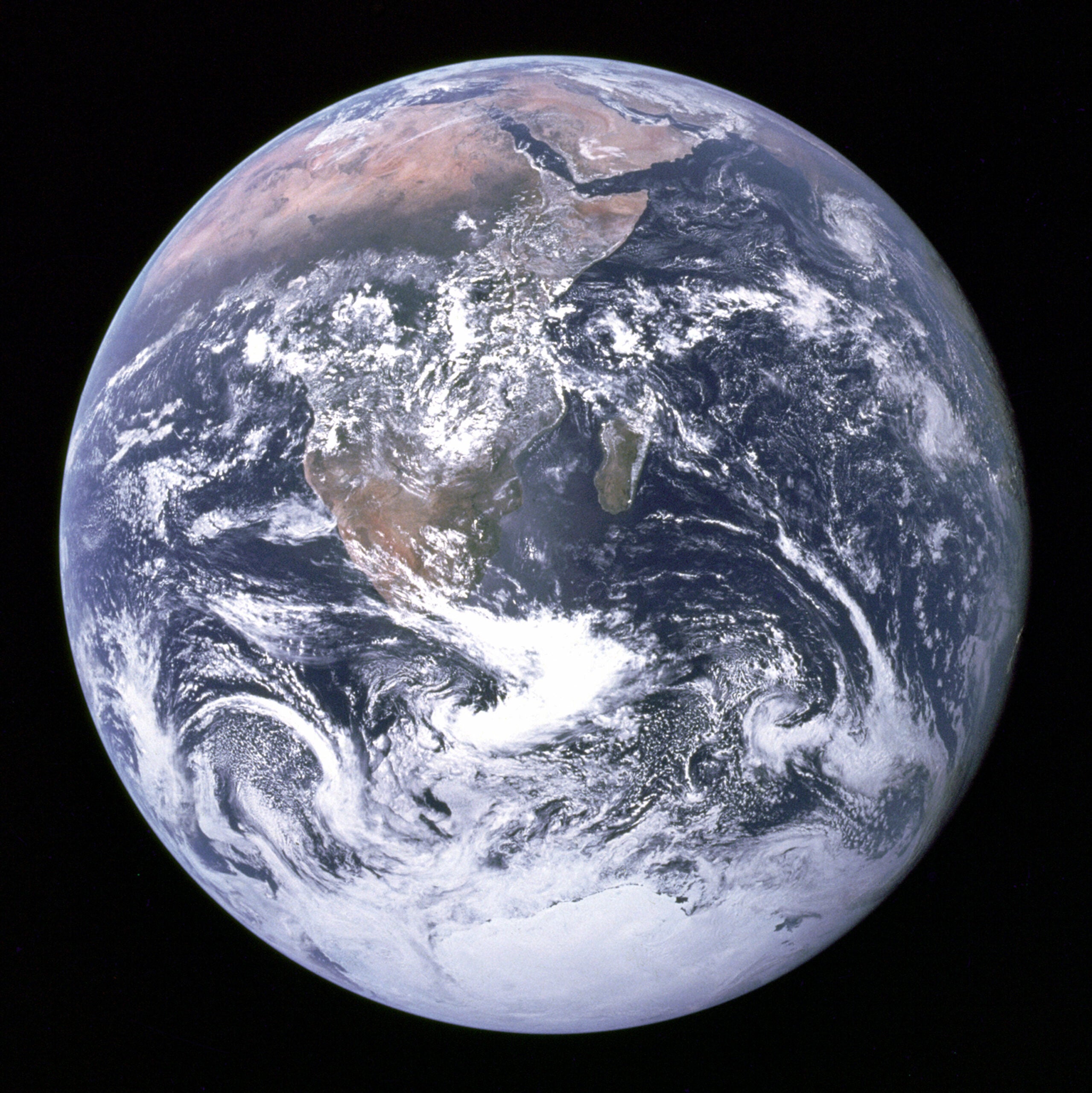Fifty years ago, on December 7, 1972, NASA’s Saturn V rocket lifted off from Cape Canaveral, Florida, carrying the last of the Apollo-era astronauts to walk on the lunar surface.
Apollo 17—the sixth and final mission of NASA’s history-making initiative to land human explorers on the moon—was a scientific breakthrough: During their 75-hour lunar stay, crewmembers Eugene A. Cernan, Ronald E. Evans, and Harrison H. Schmitt collected rare types of lunar rock and samples of “orange soil,” or regolith, that once formed in a lunar volcanic eruption, indicating that the moon’s past eras of geologic activity lasted longer than previously thought—which recent research has confirmed. But their most influential observation quickly became a milestone in our culture: With the help of one iconic photo, the mission vastly changed the way humans view our space environment.
About five hours into the crew’s moon-bound journey, the shrinking sphere of our world drew someone’s gaze (it’s still up in the air which member of the three-person crew was responsible) to the window. Upon seeing the beautiful, brightly illuminated Earth, a particularly astute astronaut grabbed hold of the onboard Hasselblad film camera and began snapping. Among those images was the one now known as the Blue Marble shot, the first photograph ever taken of the planet in its entirety.

The once-in-a-lifetime shot showcases the African continent, which is almost completely visible and backed by the swirling blue ocean. Above it, chaotic, wind-swept clouds dot our atmosphere. This was Earth as humanity had never seen it before, richly detailed and alight with life.
Easily one of the most recognizable space images ever made, Blue Marble is the only picture of the entire, round Earth taken by human hands to date. It and those first few stunning images of our planet went on to inform how official space agency photographers arrange shots of Earth and other celestial bodies, and influenced the way we take and share images of space today.
Travis Rector, an astronomer at the University of Alaska Anchorage and an astrophotographer, someone who takes photos of space phenomena in their free time, believes that all astronomers of his generation were especially inspired by the beauty of early space-age photos. “They were our first high-quality views of exotic worlds like Mars and the moon, turning these dots in the sky into real worlds we could imagine visiting in person,” he says. “The Blue Marble photo is especially important because not only does it show the spectacular beauty of our world but also its limits.”
Those limits are all the world’s resources, like the food, air, and water that sustain us, he says.
Apollo 17’s famous photo marked the end of an era in human spaceflight. It ended up being a hallmark in the history of space photography.
Full article at Popular Science.
This image of Earth from space has become so familiar that I’ve had to remind my astronomy students that for the vast part of human history, no one had ever seen Earth from this perspective. Today, we can realize how geographically limited our planet really is–it’s the only place in the solar system that could support our civilization. We can be thankful for how well our needs are met by Earth’s physical design and resources.